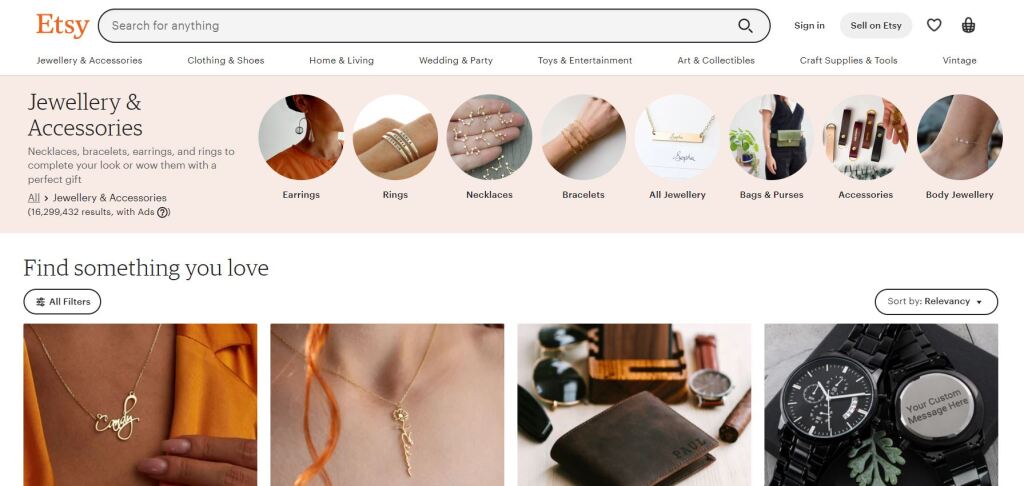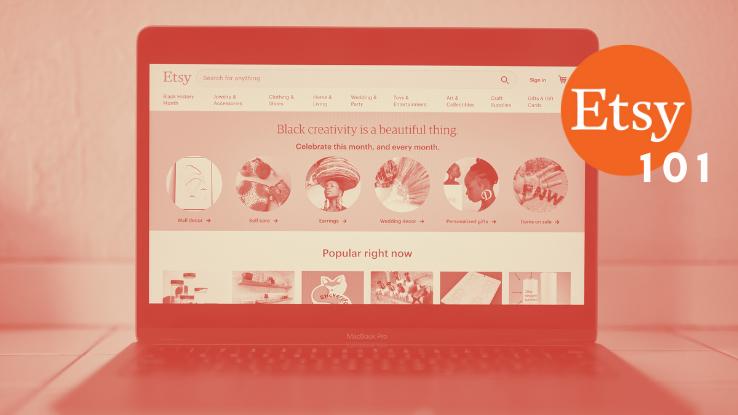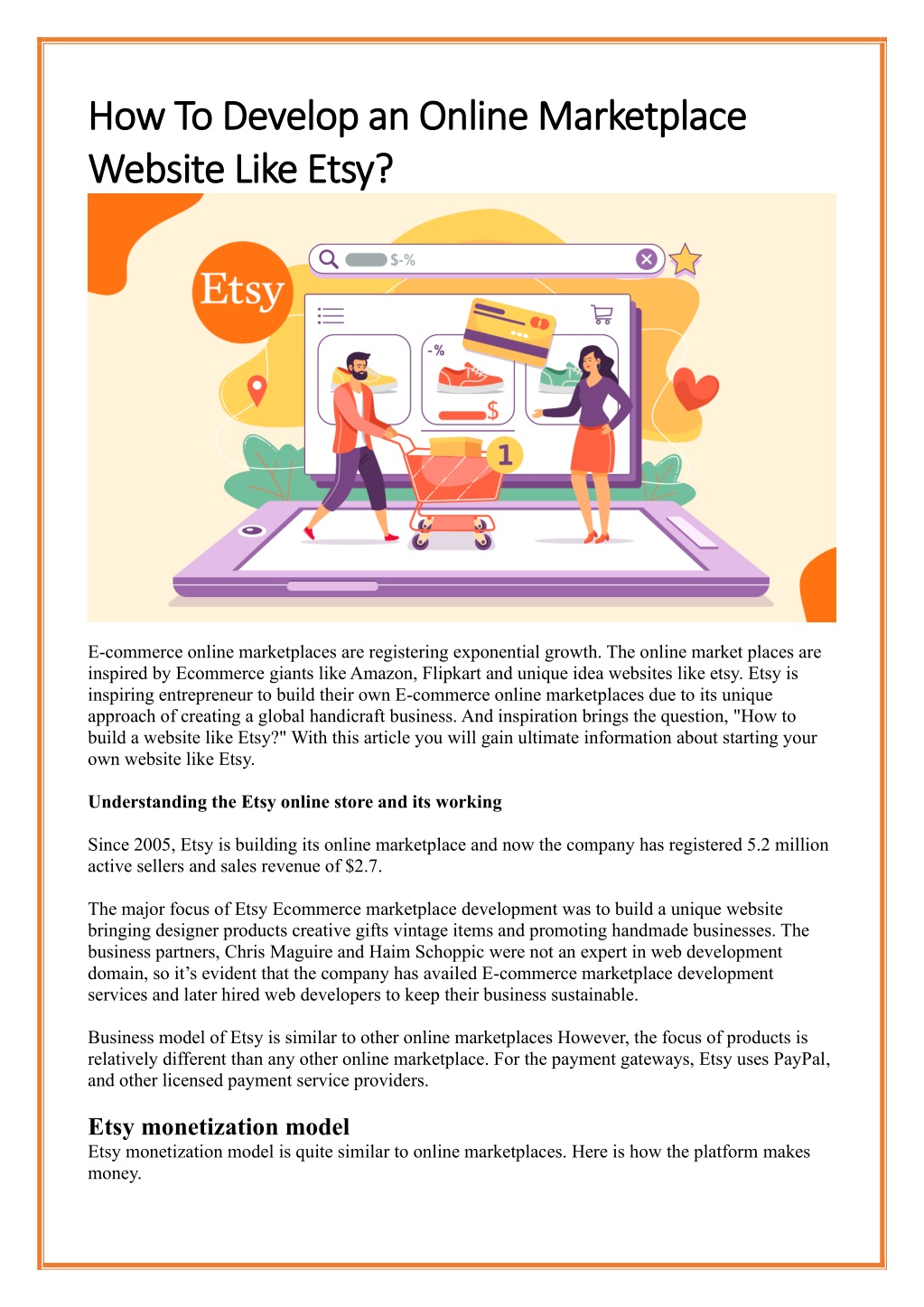Why Etsy is a Top Destination for Artisanal Goods
Etsy has established itself as a leading online marketplace for handmade, vintage, and unique items. With over 90 million active buyers, it provides an unparalleled platform for artisans and makers to showcase their wares. One of the key features that sets Etsy apart is its focus on community and connection. Buyers can browse through various categories, from jewelry and clothing to home decor and furniture, and connect directly with the sellers who created the items. This personal touch has contributed to Etsy’s popularity, making it a go-to destination for those seeking one-of-a-kind, high-quality products.
In addition to its community-driven approach, Etsy’s wide range of categories and subcategories makes it an attractive platform for sellers. From established brands to individual artisans, Etsy provides a space for creators to showcase their products and connect with potential customers. The platform’s emphasis on handmade and unique items has also helped to foster a sense of trust and authenticity among buyers, who are willing to pay a premium for high-quality, unique products.
Furthermore, Etsy’s seller-friendly policies and tools have made it an attractive option for artisans and makers. The platform provides a range of resources, including payment processing, shipping labels, and promotional tools, to help sellers manage their shops and grow their businesses. With its focus on community, unique products, and seller support, it’s no wonder that Etsy has become a top destination for artisanal goods.
Exploring Alternatives to Etsy: Other Platforms for Makers and Artisans
While Etsy is a leading online marketplace for handmade and unique items, it’s not the only platform available to makers and artisans. Other online marketplaces, such as Redbubble, Zibbet, and Storenvy, offer alternative options for sellers to showcase their products and connect with potential customers.
Redbubble, for example, is a platform that specializes in print-on-demand products, such as art prints, home decor, and accessories. It’s a great option for artists and designers who want to sell their work without having to hold inventory. Zibbet, on the other hand, is a marketplace that focuses on handmade and vintage items, with a strong emphasis on community and collaboration. Storenvy is another platform that allows sellers to create their own online stores and sell a wide range of products, from handmade goods to unique gifts.
These alternative platforms offer a range of benefits, including lower fees, more flexible policies, and a more targeted audience. For example, Redbubble’s print-on-demand model means that sellers don’t have to worry about inventory or shipping, while Zibbet’s community-driven approach allows sellers to connect with other makers and artisans. Storenvy’s customizable stores, meanwhile, give sellers the flexibility to create a unique brand identity and showcase their products in a way that reflects their style and aesthetic.
By exploring these alternative platforms, makers and artisans can find new opportunities to showcase their products and connect with potential customers. Whether you’re looking for a more specialized platform or a more flexible approach to selling online, there are many options available beyond Etsy.
How to Choose the Right Platform for Your Handmade Business
With so many online marketplaces available, choosing the right platform for your handmade business can be a daunting task. To make an informed decision, it’s essential to consider several factors, including fees, target audience, and product categories.
Fees are a crucial consideration when selecting an online marketplace. Different platforms charge varying fees for listing, transaction, and payment processing. For example, Etsy charges a listing fee of $0.20 per item, while Redbubble charges a flat fee of 20% on all sales. Understanding the fee structure of each platform can help you determine which one is most cost-effective for your business.
Target audience is another critical factor to consider. Different platforms cater to different demographics and interests. For instance, Etsy is popular among buyers looking for handmade and vintage items, while Storenvy attracts a younger audience interested in unique and trendy products. Identifying your target audience and choosing a platform that aligns with their interests can help you reach your ideal customer.
Product categories are also an essential consideration. Different platforms specialize in specific product categories, such as print-on-demand products or handmade jewelry. For example, Society6 is ideal for artists and designers who want to sell print-on-demand products, while Folksy is a great platform for British makers who want to sell handmade goods. Choosing a platform that specializes in your product category can help you reach a targeted audience and increase your sales.
Ultimately, choosing the right platform for your handmade business requires careful consideration of several factors. By understanding the fees, target audience, and product categories of each platform, you can make an informed decision and find the best fit for your business.
Uncovering Hidden Gems: Niche Marketplaces for Specific Interests
While Etsy and other similar sites are popular platforms for handmade and unique items, there are many niche marketplaces that cater to specific interests. These platforms offer a unique opportunity for artisans and makers to connect with a targeted audience and showcase their products.
Society6, for example, is a niche marketplace that specializes in print-on-demand products. It’s a great platform for artists and designers who want to sell their work as prints, home decor, and other products. Society6’s unique feature is its ability to produce high-quality prints on demand, allowing artists to focus on creating new work rather than managing inventory.
Folksy, on the other hand, is a niche marketplace that caters to British makers. It’s a great platform for artisans who want to sell handmade goods, such as jewelry, textiles, and ceramics. Folksy’s unique feature is its focus on British makers, allowing buyers to discover and support local talent.
Other niche marketplaces include UncommonGoods, which specializes in unique gifts and home decor, and Minted, which focuses on independent designers and artists. These platforms offer a range of benefits, including targeted audiences, unique features, and competitive fees.
By exploring these niche marketplaces, artisans and makers can find new opportunities to showcase their products and connect with a targeted audience. Whether you’re an artist, designer, or maker, there’s a niche marketplace out there that can help you reach your ideal customer.
What to Consider When Selling on Multiple Platforms
Selling on multiple platforms can be a great way to diversify your online presence and reach a wider audience. However, it also requires careful consideration and management to ensure that you’re making the most of your time and resources.
One of the main benefits of selling on multiple platforms is the ability to reach different audiences and increase your visibility. For example, selling on Etsy and Redbubble can help you reach a audience interested in handmade and unique items, while selling on Storenvy can help you reach a younger audience interested in trendy and fashion-forward products.
However, selling on multiple platforms also requires careful management of your inventory, orders, and customer service. It’s essential to have a system in place to keep track of your products, orders, and customer interactions across multiple platforms. This can be time-consuming and require a significant amount of effort, but it’s essential to ensure that you’re providing excellent customer service and maintaining a positive reputation.
Another consideration when selling on multiple platforms is the fees associated with each platform. Different platforms charge different fees for listing, transaction, and payment processing, so it’s essential to understand the fees associated with each platform and factor them into your pricing strategy.
Finally, selling on multiple platforms requires a significant amount of time and effort to maintain and optimize your listings, respond to customer inquiries, and provide excellent customer service. It’s essential to have a plan in place to manage your time and resources effectively and ensure that you’re making the most of your online presence.
By carefully considering the benefits and challenges of selling on multiple platforms, you can make an informed decision about whether it’s right for your business and develop a strategy to succeed.
Success Stories: How Artisans and Makers Thrive on Online Marketplaces
Many artisans and makers have achieved success on online marketplaces, and their stories can serve as inspiration and guidance for others. For example, Emily Ley, a stationery and gift designer, has built a successful business on Etsy, with over 10,000 sales and a 5-star rating. She attributes her success to her attention to detail, excellent customer service, and ability to adapt to changes in the market.
Another example is Lisa Congdon, a fine artist and illustrator, who has sold her work on Etsy and other online marketplaces. She has built a loyal following and has been featured in several publications, including The New York Times and Forbes. She credits her success to her unique style, hard work, and ability to connect with her customers.
These success stories demonstrate that with the right strategy, attention to detail, and customer service, artisans and makers can thrive on online marketplaces. They also highlight the importance of adapting to changes in the market, being open to feedback, and continuously improving and refining their products and services.
Other successful artisans and makers on online marketplaces include jewelry designers, candle makers, and textile artists. They have built successful businesses by leveraging the power of online marketplaces, social media, and word-of-mouth marketing. Their stories serve as a testament to the potential of online marketplaces to help artisans and makers reach a wider audience and achieve success.
By studying the success stories of artisans and makers on online marketplaces, others can gain valuable insights and inspiration to help them build their own successful businesses.
Staying Ahead of the Competition: Tips for Optimizing Your Online Store
With so many online marketplaces and sellers competing for attention, it’s essential to optimize your online store to stand out from the crowd. Here are some tips to help you stay ahead of the competition:
High-quality product photography is crucial for showcasing your products in the best possible light. Use good lighting, and consider using lifestyle shots to show your products in use. This will help customers visualize how your products can fit into their lives.
Well-written product descriptions are also essential for helping customers understand what they’re buying. Make sure to include all the relevant details, such as materials, sizes, and colors. Use keywords that customers might use when searching for products like yours, but avoid keyword stuffing.
Customer service is another critical aspect of running a successful online store. Respond promptly to customer inquiries, and go above and beyond to resolve any issues that may arise. This will help build trust with your customers and encourage them to leave positive reviews.
Finally, make sure to keep your online store up-to-date and fresh. Regularly update your product listings, and consider offering promotions or discounts to keep customers coming back. This will help you stay ahead of the competition and attract new customers to your store.
By following these tips, you can optimize your online store and stay ahead of the competition on Etsy and other similar sites. Remember to always keep your customers in mind, and focus on providing them with the best possible experience.
Conclusion: Finding the Perfect Online Marketplace for Your Handmade Business
In conclusion, finding the perfect online marketplace for your handmade business requires careful consideration of several factors, including fees, target audience, and product categories. By understanding the unique features and benefits of each platform, you can make an informed decision and find the best fit for your business.
Etsy and other similar sites offer a range of opportunities for artisans and makers to showcase their products and connect with customers. However, it’s essential to explore other options and consider the pros and cons of selling on multiple platforms.
By following the tips and advice outlined in this article, you can optimize your online store and stay ahead of the competition. Remember to focus on providing excellent customer service, using high-quality product photography, and writing detailed product descriptions.
Ultimately, the key to success on online marketplaces is to find the right platform for your business and to be willing to adapt and evolve over time. By staying focused on your goals and being open to new opportunities, you can build a successful and sustainable business on Etsy and other similar sites.
We encourage you to explore the various online marketplaces and find the best fit for your handmade business. With the right platform and a bit of hard work, you can achieve success and build a loyal customer base.







